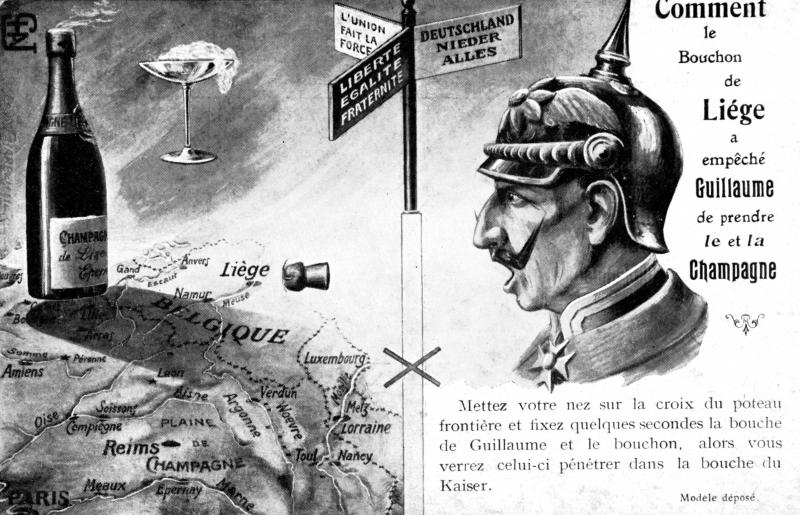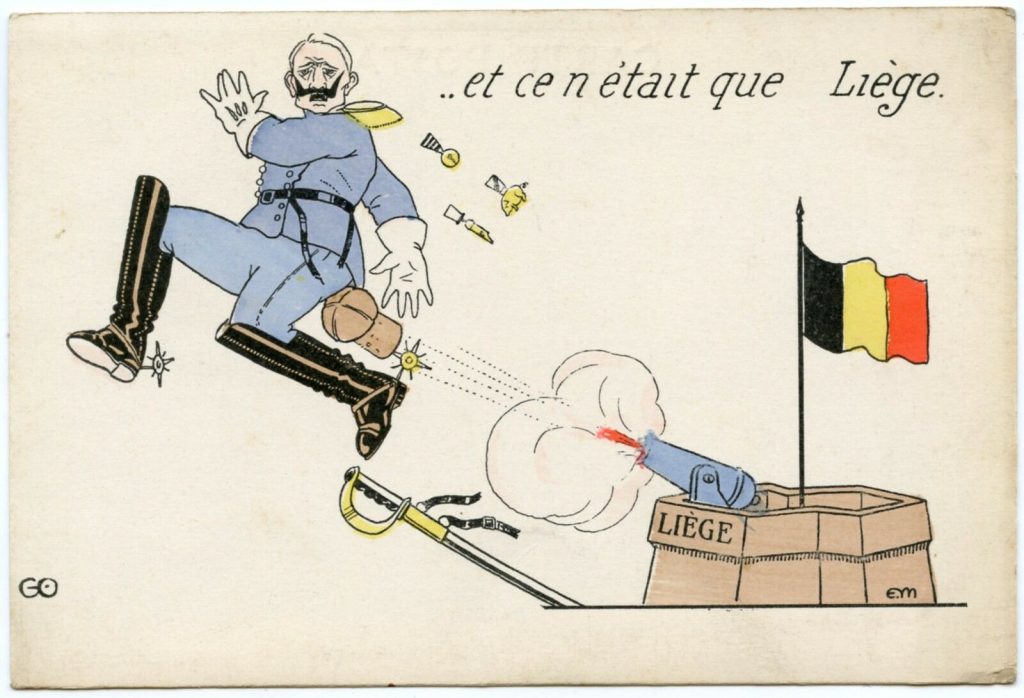The resistance of the Belgian Army to the German invasion of 1914 is sometimes referred to as the “Cork of Liège.” To everyone’s surprise, the small Belgian Army managed to stop the flow of the German invasion in the fortified region of Liège for ten days. It thus caused the first serious hitch in Germany’s Schlieffen Plan.
After the capture of Liège, the Belgian Army, under the leadership of King Albert I, retreated in good order to the entrenched camp of Antwerp. This camp was considered impregnable. The siege of Antwerp continued until October 1914, when the city had to be abandoned. Then, the survivors of the Belgian Army, a little less than 60,000 men, retreated to the Yser Line. There, they were supported by French and British troops. Together, they succeeded in stabilizing the front.
Several French satirical postcards of the Great War evoke the resistance of Liège by using the image of the cork to illustrate it. One of them, in black and white, is divided into two parts. On the left side, we can see, on a map of Belgium, a bottle and a glass of champagne from Liège.
A cork is placed to the left of a border post crossing the postcard from top to bottom. To this post are attached two panels on which one can read respectively: “Strength in numbers” (United we stand) and “Liberté, Egalité, Fraternité” (Liberty, Equality, Fraternity). Attached to the right side of the panel, one reads “Deutschland Nieder Alles” (Germany below everything) as opposed to the maxim “Deutschland Über Alles” (Germany above everything). On the right side is a caricature of Kaiser Wilhelm II. He is shown wearing a pointed helmet, and his mouth is open. The text appears in the right “How the Cork of Liège prevented Wilhelm from taking the Champagne.” The whole clever game consists in bringing his nose closer to the cross marked on the bottom of the post to see by an optical effect the cork of the left part of the card passing towards the throat of Wilhelm II.
Another postcard shows Wilhelm II in uniform, still helmeted and wearing spurred high boots. He is running away from an artillery piece whose barrel is replaced by a bottle of champagne that pulls a cork towards his leg. A small Belgian infantryman is sitting on the neck of the bottle. The following text appears on it: “Destiny – If you don’t have Champagne! Take this cork of Liège”.


Do you have information about events experienced by your family during the world wars? By sharing your story, you will enrich our “Drawing inspiration from heroes” section.